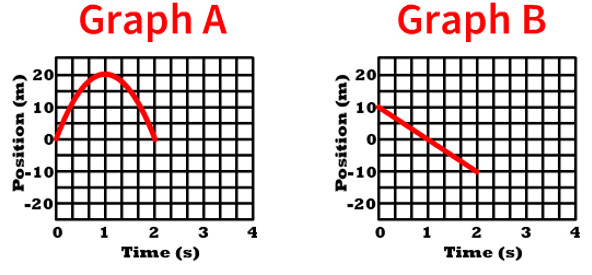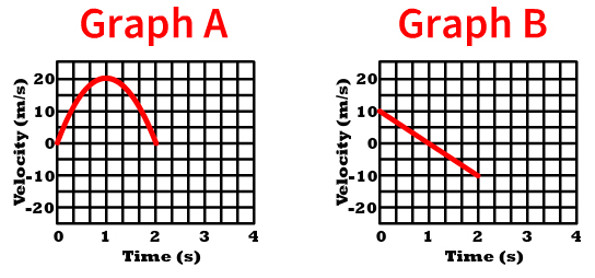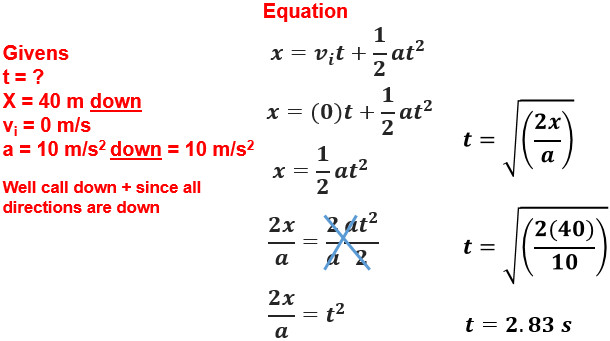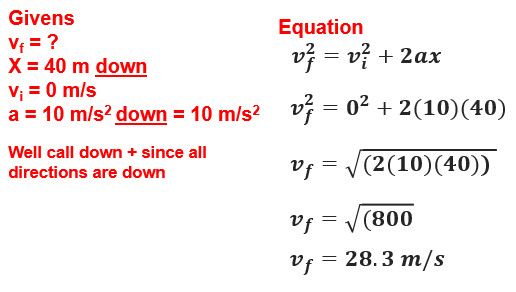Acceleration Due To Gravity Learning Targets
- I understand what an acceleration due to gravity of 10 m/s2 means
- I can recognize position time and velocity time graphs with acceleration due to gravity
- I can recognize acceleration due to gravity problems
- I know how to solve acceleration due to gravity problems
Optional: Buy a guided set of notes for this page at Teachers Pay Teachers if your teacher has not provided one.
Acceleration Due To Gravity
When a projectile is in the air, under ideal conditions, it's acceleration is around 9.8 m/s² down most places on the surface of the earth. This will vary due to altitude. You will have less acceleration due to gravity on the top of mount Everest than at sea level. We will use a rounded 10 m/s² down in our solutions for (a) or any special form of an equation as (g).
At 10 m/s² down, velocity changes by 10 meters per second every second in a downward direction. Watch how the acceleration of 10 m/s² down never changes but the velocity does because of this acceleration due to gravity.
See how the StickMan throws the ball up at 20 m/s, it stops at the top, and returns to the StickMan at an equal speed of 20 m/s but now directed down.
An object thrown up will land at the same magnitude of velocity but have an opposite direction.
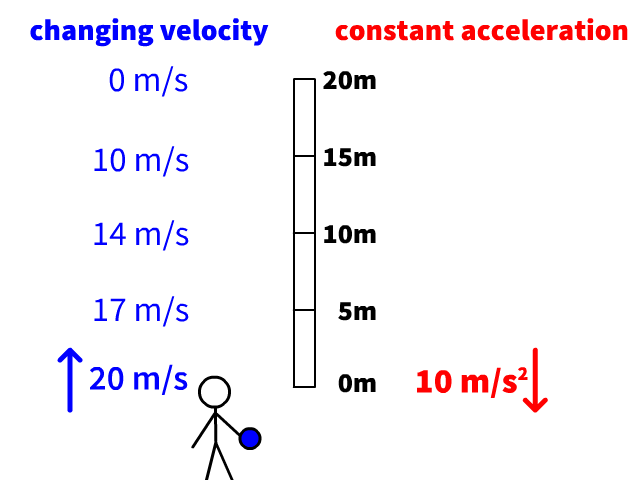
What is the acceleration due to gravity value on earth?
What is the acceleration due to gravity of a ball thrown up at 10 m/s?
What is the acceleration due to gravity of a ball thrown up at 10 m/s when it gets to the top of its flight path?
What direction is the acceleration due to gravity?
Position Time Graph (Acceleration Due to Gravity)
On a position time graph slope represents velocity. You see the ball slowing down on the way up, stops at the top, and then speeds up on the way down.
- (+v, -a) slowing down on the way up
- +v : the ball is moving up
- -a : the acceleration is 10 m/s² seen in the curving slope down
- (v=0 , -a) at rest for a moment at the top
- v=0 : for a moment the ball stops
- -a : the acceleration is 10 m/s² seen in the curving slope down
- (-v, -a) speeding up on the way down
- -v : the ball is moving down
- -a : the acceleration is 10 m/s² seen in the curving slope down
The acceleration due to gravity is 10 m/s² down the entire time the ball is in the air.
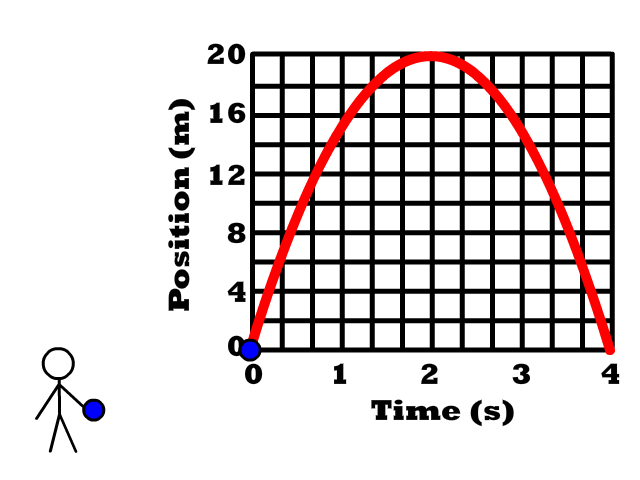
Velocity Time Graph (Acceleration Due to Gravity)
On a velocity time graph slope represents acceleration. The ball starts with the maximum positive velocity, stops at the top, and ends when caught at the same height with the same speed but in the opposite or negative direction. It is important to see that the slope is still 10 m/s² down when velocity is zero.
- (+v, -a) slowing down on the way up
- +v : the ball is moving up
- -a : the acceleration is seen as the 10 m/s² continuous slope down
- (v=0 , -a) at rest for a moment at the top
- v=0 : for a moment the ball stops
- -a : the acceleration is seen as the 10 m/s² continuous slope down (still the same slope when velocity is zero)
- (-v, -a) speeding up on the way down
- -v : the ball is moving down
- -a : the acceleration is seen as the 10 m/s² continuous slope down
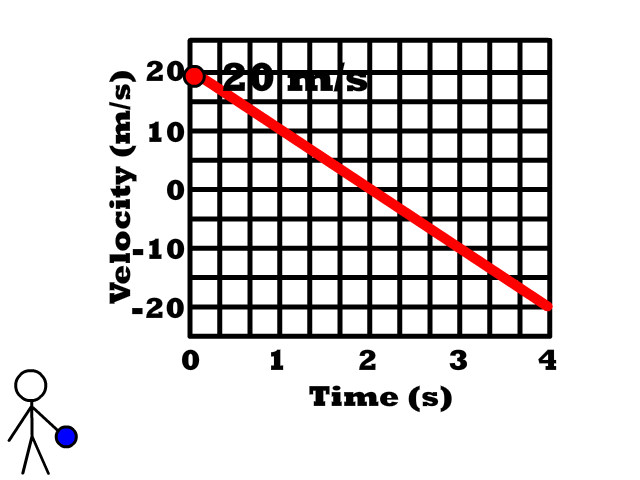
The continuous "changing slope" curving down represents the acceleration due to gravity on a position time graph. The slope of a velocity time (VT) graph represents acceleration. When calculated that VT slope is -10 m/s² or 10 m/s² down.
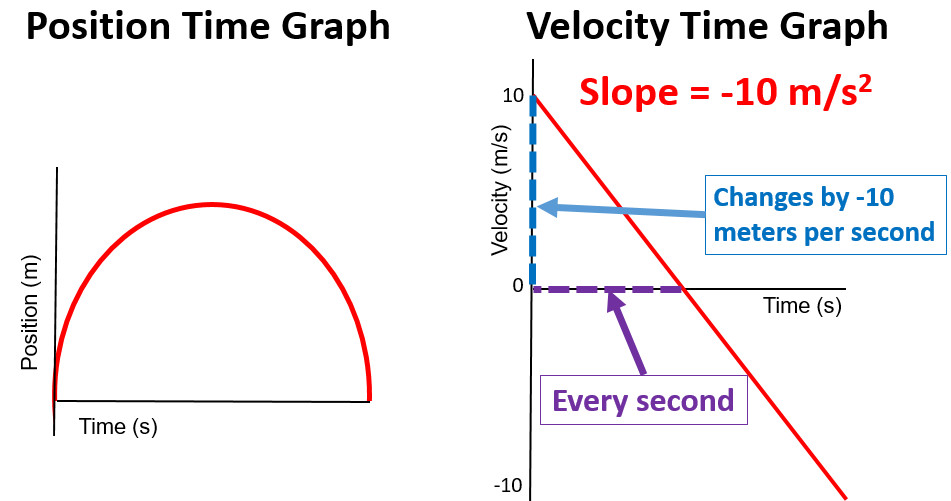
Acceleration Equation Variables
| Name | Variable | Unit | Unit Abbreviation |
| Initial Velocity or Initial Speed | vi or viy | meters per second | m/s |
| Final Velocity or Final Speed | vf or vfy | meters per second | m/s |
| Time | t | seconds | s |
| Acceleration | a or g
(g) acceleration due to gravity 10 m/s2 down on earth |
meters per second squared | m/s2 |
| Displacement or Distance | X or Y
|
meters | m |
Subscripts describing to variables above: initial(i), Y axis(y), final(f), initial Y axis(iy), final Y axis(fy)
Note:
- In my example below, we use a for acceleration due to gravity and x for displacement. This way we can use the generic acceleration equations from the equation sheet. Many classes make you memorize your equations so it's best to just use the original.
- Specialized equations seen in the picture have a as g (acceleration due to gravity) and x as y. A falling object's displacement is down, the reason for the negative sign.
- The equations to the right all are three of the four original acceleration equations in the last section. The one missing does not have acceleration as a variable.
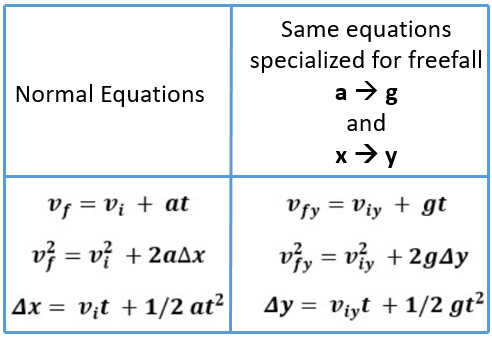
Working Through an Acceleration Due to Gravity (Freefall Problem)
When you read a problem that has an object thrown, dropped, or rolled off a table the object will be in freefall. Freefall does not mean it fell to get in the air but is only under the influence of gravity. In later units we will encounter air resistance but unless you are told otherwise assume an ideal condition with no air resistance. When you read a problem and the object is in the air as a projectile (just under the influence of gravity), the acceleration will be 9.8 m/s2 down.
Example Acceleration Due to Gravity Question:
Jose dropped a ball from a height of 15 m from rest, how fast was it going before it hit the ground?
- Step one: read the entire problem and determine if an object is in the air (and not being propelled like a rocket), if only being affected by gravity a=10 m/s2 down should be part of your givens list.
- Step two: pick out the unknown the question is asking you to solve for and add it to a givens list. (example: vf = ?)
- Step three: pick out the variables given in the equation. (example: vi = 0, x= falls 10 down (or -10 m) , a= -10 m/s2)
- Step four: figure out which variable is missing (example: t is missing)
- Step five: pick the one equation that does not have that missing variable (in this example: vf2 = vi2 + 2ax)
Example Problems
How fast is a ball moving when falling from rest and hits the ground 1.5 seconds later?
- Note: since all of the givens are scalars or in no direction, I will call down positive and a positive final answer on a vector gets the direction down
What is the displacement of a ball that is thrown up at 15 m/s one second after thrown?
- Note: There is an up direction and a down in this example so I call up positive and down negative. A positive answer on a vector comes with the direction up.
How long does it take a ball to hit the ground when dropped from 40 meters?
What is the final velocity of a ball the moment before it strikes the ground from 40 meters?
What a Constant Acceleration of 10m/s2 Down Does to Velocity
Observe the two animations below of a = 10 m/s2 down or changing velocity by 10 m/s down every second. The one on the left is of a ball thrown up at 10m/s, the next dropped from rest, and the last thrown down at 10 m/s. On the right you see a ball dropped and another thrown down at 10 m/s. The ball on the right is always going faster down and therefore covers more meters per second. Notice how the two keep on getting further apart.
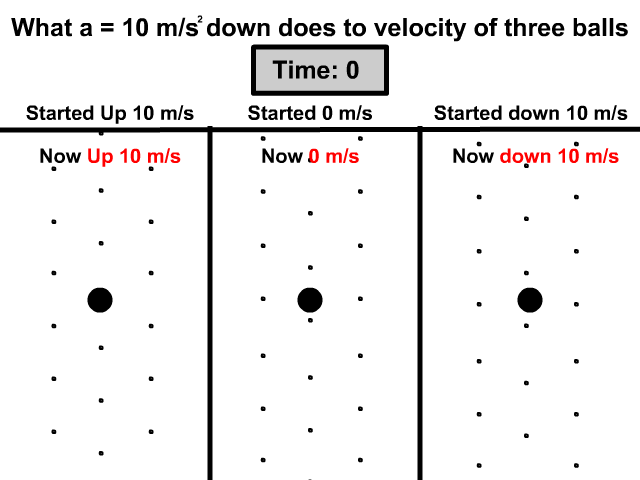
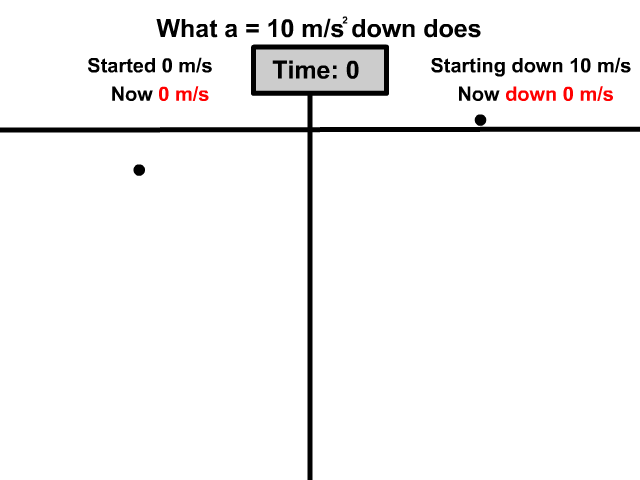
Which has a greater acceleration due to gravity?
A) A ball thrown up at 30 m/s
B) A ball thrown up at 10 m/s
C) A ball dropped
D) A ball thrown down at 30 m/s
Freefall and Air Resistance
Until now and a future unit, all our acceleration due to gravity questions with projectiles were set up to be in free fall.
- Projectile - object in the air under the influence of gravity
- Free fall - a projectile with only the force of gravity influencing it
Watch our video to review the material from this section.
Vacuum and Space
- Vacuum: A container or area with the air sucked out
- Space is a vacuum with no air particles
- Earths atmosphere holds in air particles so its not a vacuum
- Unless otherwise noted in this unit we will work problems as if they were in a vacuum
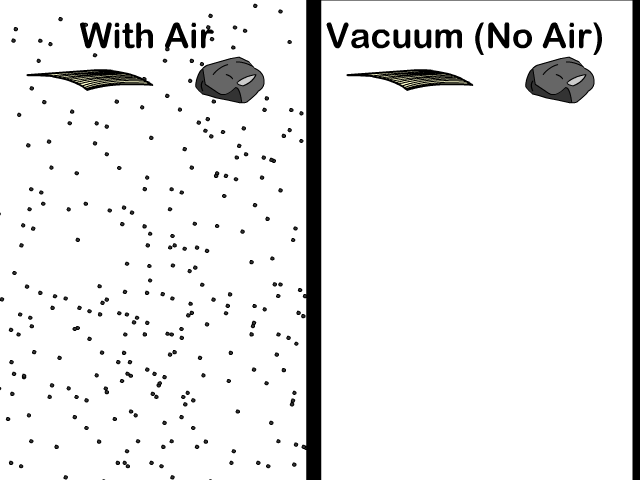
Another thing not mentioned until a further unit is that the acceleration due to gravity changes as you go to the surface of other planets and moons.
On earth we've used 10 m/s² down though its closer to 9.8 m/s². A place like the moon which is less massive than the earth would have less acceleration due to gravity.
- Earth: 9.8 m/s² down
- Moon: 1.6 m/s² down
Ideal: the perfect scenario without external factors affecting an experiment.
In reality, the net acceleration on an object has the force of gravity and air resistance interacting on an object.
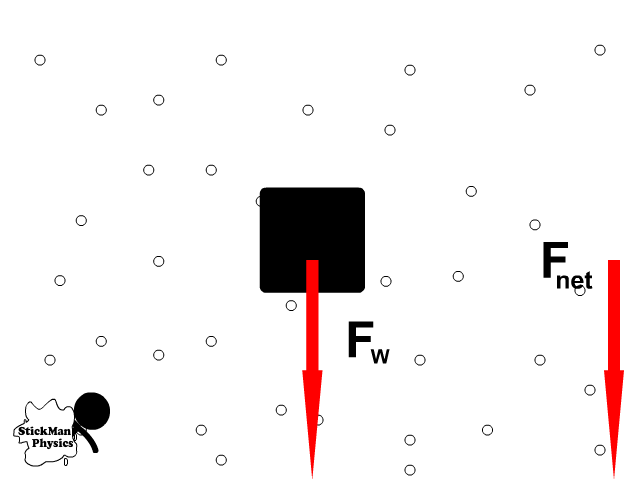
Acceleration Due to Gravity Recap
- As an object falls faster, air resistance increases while the force of gravity stays the same
- Remember free fall means no external factors like air resistance
- In free fall only the force of gravity causes an object to accelerate at (9.81 m/s² down) which we round to 10 m/s² down.
- This decreases the net force decreasing the overall acceleration of an object
- In this unit assume freefall unless otherwise noted it is a real scenario
Acceleration Due to Gravity Quiz
Links
- Try Some Mixed Practice Problems with Review
- Back to the 1D Motion Main Page
- On to our Next Unit: 2D motion
- Back to the Stickman Physics Home Page
- Equation Sheet

